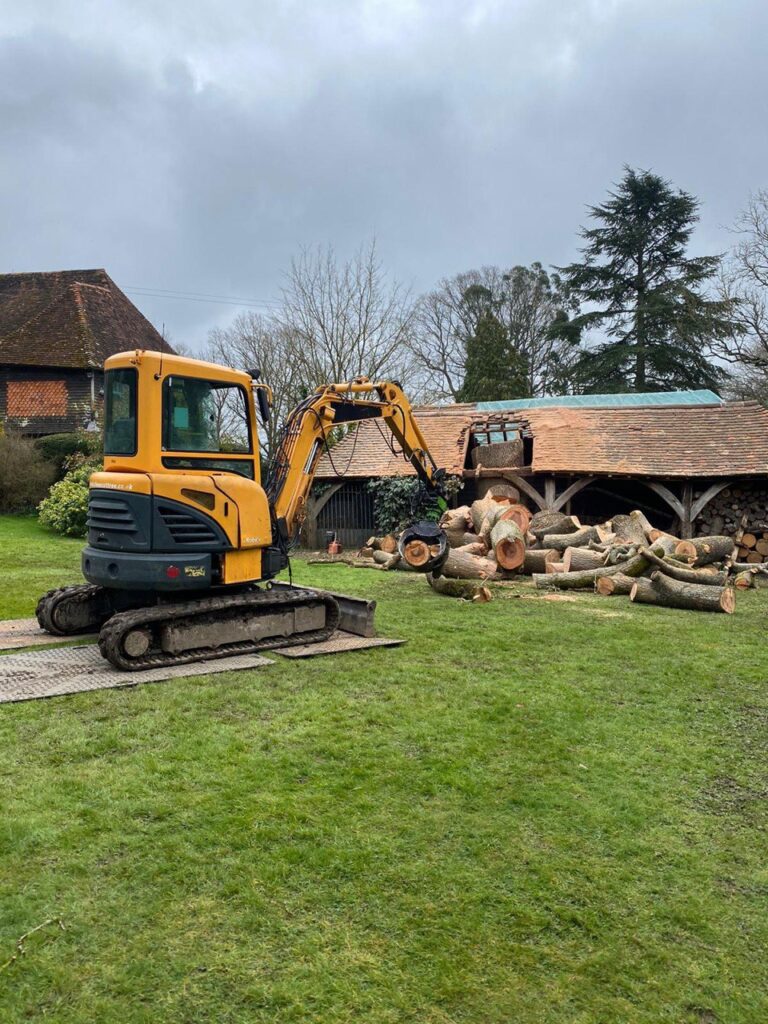Winter Pruning: Pros, Cons, and Best Practices
Introduction: Winter brings unique challenges and opportunities for tree care, including pruning. Pruning is essential to maintaining tree health and structure, but it’s essential to understand when and how to prune during the winter months. In this blog post, presented by Watton Tree Surgeons, we’ll explore the pros and cons of winter pruning and provide you with best practices to ensure your trees thrive year-round.
Pros of Winter Pruning
- Visibility: Winter’s bare branches provide excellent visibility of a tree’s structure. With no leaves, tree surgeons can better assess the tree’s condition, identify dead or diseased branches, and make precise pruning cuts.
- Dormancy: Most trees are dormant during winter, meaning they are less actively growing. This dormancy reduces the risk of excessive sap flow, making pruning less messy and reducing the chances of attracting pests and diseases.
- Reduced Disease Spread: Many tree diseases and pests are less active during winter. Pruning during this season can help prevent the spread of diseases, as the pathogens are less likely to be active.
- Enhanced Aesthetic Appeal: Pruning in winter can improve a tree’s overall structure and aesthetics before the leaves return in spring. This is particularly valuable for ornamental trees.
Cons of Winter Pruning
- Cold and Harsh Conditions: Winter weather can be challenging for tree surgeons and the trees. Extreme cold can make the work uncomfortable and potentially dangerous, and pruning during freezing temperatures is not recommended.
- Limited Growth Response: Pruning during dormancy may result in a slower growth response than during the growing season. However, this can also be an advantage in preventing excessive regrowth.
- Risk of Cold Injury: Overzealous winter pruning, especially on tender species, can expose sensitive tissues to freezing temperatures and cold injury. Proper pruning techniques and timing are crucial to mitigate this risk.
Best Practices for Winter Pruning
- Choose the Right Trees: Not all trees are suitable for winter pruning. Some, especially those prone to cold injury, are best pruned during the late dormant season or early spring.
- Avoid Extreme Cold: Pruning in extremely cold conditions can harm the tree and the pruner. Aim for milder winter days with temperatures above freezing.
- Focus on Dead or Diseased Branches: Prioritise the removal of dead, damaged, or diseased branches. This reduces the risk of disease spread and improves tree health.
- Proper Pruning Techniques: Use proper pruning techniques to make clean cuts that minimise damage to the tree. Avoid leaving stubs or creating large wounds.
- Limit Pruning on Tender Species: Be cautious when pruning species sensitive to cold injury. Light pruning is often safer for such trees during the winter.
- Consult a Professional: When in doubt or dealing with large or valuable trees, consult a professional tree surgeon. They have the expertise and experience to assess and prune the tree’s condition safely and effectively.
Conclusion: Winter pruning can be a valuable tool in maintaining the health and appearance of your trees. By understanding the pros and cons and following best practices, you can ensure your trees thrive throughout the year, even during the colder months. For more complex or delicate pruning tasks, don’t hesitate to reach out to a certified tree surgeon to ensure the best possible care for your trees.
Call us on: 01953 667 637
Click here to find out more about Watton Tree Surgeons
Click here to complete our contact form and see how we can help with your tree’s needs.

